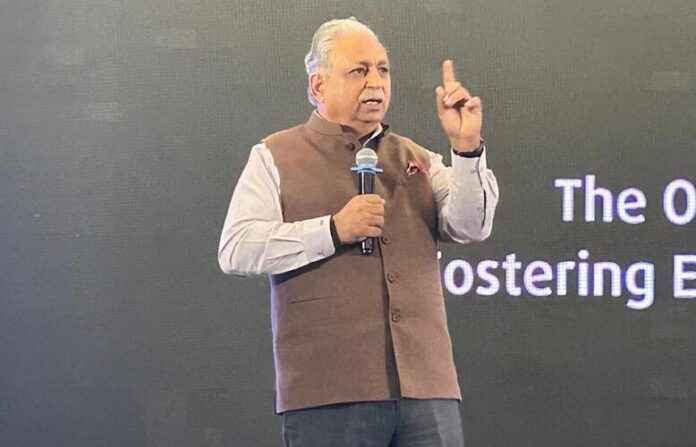At TalentNomics India’s 10th Annual Global Leadership Conference, themed “Power. Pixel. Parity: Equity in the Age of Automation,” CP Gurnani, Co-Founder and Vice Chairman of AIonOS and former CEO and Managing Director of Tech Mahindra, delivered an address examining the widening influence of artificial intelligence and the need to align technology with human intent, equity, and problem-solving.
Also read: CP Gurnani Honoured with Capital Foundation’s Vineet Nayyar Technology Award 2025
Speaking at the conference, Gurnani compared the pervasiveness of artificial intelligence to electricity, implying that its an invisible, ever-present force people rely on without conscious recognition. “AI is becoming more like electricity… all of us have been using AI for as many years as we’ve been active,” he said, noting that everyday digital behaviour already involves algorithmic assistance.
Also read: Agentic AI Faces Reality Check: CP Gurnani and Arjun Nagulapally from AIonOS Weigh in
Gurnani reflected on recent experiences that shaped his thoughts on the potential of AI and the human mind. During a visit to an ashram in Bengaluru, he observed young children demonstrating cognitive training techniques, including blindfolded reading exercises and advanced concentration practices. This led him to question whether emerging technologies could complement the abilities of older generations or people outside traditional digital ecosystems. The incident underlined his belief that the intersection of AI and human cognition remains largely unexplored.
AI, Agriculture, and the Need for Sector-Specific Solutions
Gurnani urged the audience to think of AI not as an end in itself but as a tool to address practical, often overlooked national challenges. Using agriculture as an example, he argued that India’s smaller farm sizes, commonly seen as a structural disadvantage, could become opportunities for AI-enabled optimisation.
“What can AI do to help a farmer produce pomegranates instead of wheat? What can we do to create four crops a year instead of two?” he asked, stressing that technology could support both diversification and productivity. Drawing parallels with the evolution of Amul from a local cooperative to a global dairy brand, he highlighted the value of using data, learning, and “the power of multiplication” to enhance livelihoods.
Addressing Data Bias and Ensuring Parity
A significant part of Gurnani’s address focused on bias within AI systems particularly biases embedded in datasets that shape algorithmic decisions. He reiterated that data, not the algorithm itself, often determines whether an AI system performs equitably.
Citing an analogy, he said that if a car tilts left based on its tyre marks, additional balance is added on the right. By the same logic, skewed datasets require corrective measures. “If my data has a skew, why would I not bring parity? Why can’t I extrapolate the 20 percent data that women have given and give it equal weightage compared to the 80 percent from men?” he asked, arguing for deliberate interventions to ensure representation in AI training data.
Pixels, Precedents, and the Power of Collective Intelligence
Gurnani also connected the conference theme, Power, Pixel, Parity, to broader digital realities. He described the pixel as the smallest unit of digital measurement and used it as a metaphor for collective intelligence. “One pixel doesn’t mean anything, but collective pixels create a megapixel,” he said, applying the analogy to India’s judicial backlog of 5 crore cases. He suggested that AI could analyse historical legal precedents to assist judges and lawyers, reducing individual bias and improving consistency though not replacing human judgement. “You have to humanise the AI,” he added, emphasising that technology should augment, not override, human decision-making.
Throughout his remarks, Gurnani returned to a central idea: AI’s value depends on clarity about the problems society intends to solve. Whether in employment, healthcare, education, or governance, technology can strengthen outcomes only when paired with human curiosity, creativity, and intent. “To me, AI is an amplifier. AI is applied intelligence,” he said, calling on participants to identify the solutions they want to pursue. He concluded by inviting the audience into an interactive dialogue, underscoring that discussions at such forums could shape real-world change.









